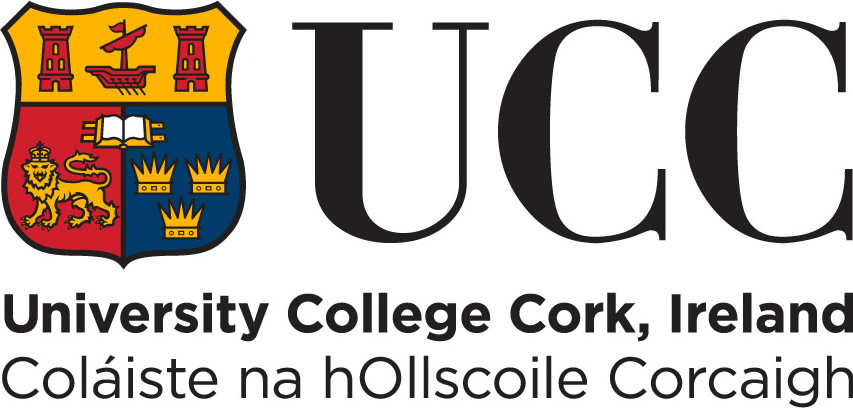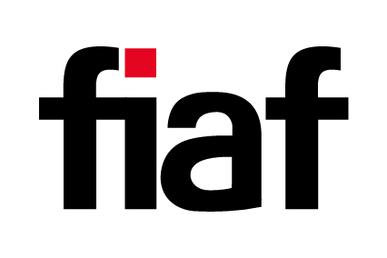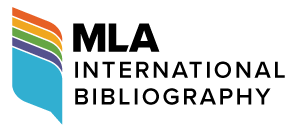New Nonfiction Film: Art, Poetics, and Documentary Theory, by Dara Waldron. Bloomsbury Academic, 2018, 207 pp.
Darrell Varga
For Dara Waldron, the creation and critical reception of what he calls “new nonfiction film” is an exercise in recovery from the systemic repression of the creative within the practice, famously defined by John Grierson as “the creative treatment of actuality” (13). Grierson himself admitted that his definition of documentary cinema was inadequate; more to Waldron’s point, what became known as the Griersonian documentary, both under his tutelage and beyond, privileges the functional and informational over the poetic and the possible. For Grierson, poetic elements must be in service of the representation of the world and the task of the documentary is to identify reality and posit solutions to improve the particular within the whole. Waldron looks to the margins of documentary to make the case for a practice of cinema that is vested in reality, not as utilitarian representation, but through encounters of the real intersecting with the possible. This proposition is in response to two related, but contradictory forces. The first being the global fog of neoliberalism which seeks to monetise and instrumentalise all aspects of everyday life, implicitly questioning the legitimacy of the public commons. In other words, the social conditions that made possible a film like Night Mail (Harry Watt and Basil Wright, 1936) no longer readily exist—not that this is the kind of filmmaking Waldron is talking about, but the shift in mainstream practice is part of the context. The other force at play is the increased presence of the moving image in the art museum. It could be argued that the latter is a response to the desire for a popular audience and the need for increased revenue as part of the conditions of the former. Brian Winston has provided a detailed critique of what passes for documentary within broadcast journalism as a consequence of these neoliberal conditions (Lies). Winston suggests that there has been a consequent decline in the social relevancy of the form, even if he also understood the Griersonian tradition in a film such as Night Mail was hardly radical; rather, it tends to perpetuate a romantic passivity amongst a working class more often than not depicted as victims (Winston, Claiming 40). The films discussed by Waldron are important for many reasons, including the refusal of these ideological norms, especially as regulated by broadcast television.
Prominent British filmmakers such as John Akomfrah and Isaac Julien have moved from conventional cinema to gallery installations and Waldron cites this shift as exemplifying the transformation of documentary, with Akomfrah’s The Stuart Hall Project (2012) receiving detailed analysis. He does not discuss the actual policies of funding for documentary, structural conditions which have, on the one hand, opened up the artworld to filmmakers, but that have also further restricted the possibilities for experimentation among those who work under more conventional circumstances. The artworld provides opportunities for the visual representation of speculative play, but it is also stratified by a star system and driven by the whims of private collectors. More conventional documentary, on the other hand, is more than ever linked with the commercial imperatives of broadcast television. In its most basic terms, Waldron suggests that new nonfiction film is drawing on the subjectivity of art to make claims on the real in a way that is poetic and thus, expressive of possible worlds, rather than as representations of the present reality. This is distinct from the fictional approaches that have long been part of documentary production (for instance, the mail sorting scenes in Night Mail were filmed on a soundstage, not on a real train). The intention is to disrupt the notions of truth associated with hegemonic representational practices, replacing Grierson’s methodological dictate of the creative treatment of actuality with, as Waldron says, “the speculative treatment of subjectivity” (19). For Akomfrah, the shift from conventions of linear cinema toward the utopian promise of the archive is a political move against the teleological erasures of institutional memory which, as Waldron explains, “seeks to encase the image in a specific this or that, shutting off its potential” (57).
Waldron’s most useful theoretical influence is Robert Bresson’s Notes on the Cinematograph, interesting first of all as the text of a practitioner and, moreover, a text for an especially spare and minimalist approach to fiction with which Bresson seeks to identify what is integral to cinema as a distinct art form. Bresson proposes that character functions as “modèle” (model) rather than performer, as a way of getting at a concept of screen presence not as utilitarian representation of the world, but as a truth of subjectivity created in a dialectical relationship between actor and director (Waldron 20–1). Here, performance is not deployed to uncover an objective truth; rather, the mechanistic approach of the modèle engages a “speculative interrogation of subjectivity” (26) in a way that disengages the limits of ethnography as a singular depiction of a given subject. This approach is distinct from the idea of performance in documentary, described by Bill Nichols as being “stripped of the training, rehearsing, and directing that normally accompany it” (Representing 121). Think of the observation of performance in Salesman (Albert and David Maysles, and Charlotte Zwerin, 1969) or the constructedness of representation that goes back to Robert Flaherty. In these instances, the pretence of “acting” is that we are seeing what would occur without the presence of the camera. This pretence is removed in Bresson’s modèle.
Waldron devotes a lengthy section to the films of Abbas Kiarostami to explain new nonfiction as distinct from existing documentary modes. Close-Up (Nema-ye Nazdik, 1990), for example, is put forward as a useful example precisely because it does not fit easily within existing categories of either fiction or documentary. The film’s absurd content uses nonprofessional actors in a story that comes directly from a real-life event, but that event is itself predicated on falsehood. It is the story of an unemployed printer named Hossain Sabzian, who impersonated Iranian filmmaker Mohsen Makhmalbaf, coming to live with a family, the Ahankhahs, and claiming that he would make a film with them. Kiarostami does not simply make an observational or reportage documentary of the charges of fraud and subsequent court case. Instead, he collaborates with Sabzian, Makhmalbaf and the Ahankhahs in a way that parodies vérité approaches and obfuscates the distinction between observation and docudrama. This creates a collaborative representation of the subject Hossain Sabzian—who is the subject of the film, but also himself, and each of these identities are not entirely the same. As the title suggests, the film also interrogates its own formal methods of attempting to get close to the truth. Kiarostami is cited as disbelieving in even the possibility of observational filmmaking without invention and intervention, and Waldron takes up Kiarostami’s position as an opportunity to posit the new nonfiction approach as the alternative (126).
Waldron uses the making of Close-Up to outline specific criteria for this nonfiction approach. First, the subject, not a distinct actor, performs as modèle. This subject is not at a remove from the filmmaker, but is a collaborator in the speculative construction of character, such that “[a] dialectical relationship opens up between director and subject as modèle that involves the mutual recognition and appreciation of the aesthetic aims of the project” (80). While there is similarity with both conventional documentary and method acting, what is important is the dialectical relationship whereby “[f]iction is being negated (not yet) by a ‘real’ that emerges in the making of the film” (81). Waldron puts forward a negation that is held in suspense in order to enact a process of speculative possibility. In this way, new nonfiction can engage in complexities of desire, as he goes on to describe with respect to Kiarostami’s Life and Nothing More… (Zendegi va digar hich, 1992): “a process without finality, in the face of finitude” (114).
This is a cinema praxis that refuses affinity with what Nichols calls the “discourses of sobriety” (Representing 3) through which power is instrumentalised via a direct relationship with a particular understanding of reality. If vérité filmmakers claim a seat around this stable set of meanings, the new nonfiction approach is to remain standing at the margins where poetic expression can foster alternate possibilities, calling forth, as Waldron says of John Akomfrah, “what is to come, as opposed to documenting what is already there” (9). A documentary strictly interested in information would tell us that Sabzian is not who he claims, but in Kiarostami’s speculative approach, he becomes coauthor. He is no longer Makhmalbaf and is also not, strictly speaking, Sabzian, but within Waldron’s reading of Kiarostami he is no less real since the making of cinema has enabled a new reality both on screen and in the relationship amongst the participants. This approach will, no doubt, aggravate documentary purists. We are shown relationships that are at once of real individuals but are also speculative subjectivities set in motion by Kiarostami. Here, Sabzian does indeed become a filmmaker, though not through a process of his own choosing and, following Marx, documentary need not simply describe the world, but participate in its transformation. The point of new nonfiction is not simply to represent (or sensationalise as fiction) but, as Waldron says of Kiarostami’s Through the Olive Trees (Zire darakhatan zeyton, 1993), to see “a real confronted and held in suspense by fiction, bringing a deconstructive energy into play that manifests as an aesthetic tension in the work itself” (113).
New Nonfiction Film is an important book. It proposes not only a new way of critically engaging with documentary film, but also proposes a new filmmaking practice (or at least new in application to the existing mode of documentary). It does this through analysis of a relatively small number of films, unlike the more canonical survey texts such as those by Bill Nichols, Brian Winston, Richard Barsam and others. As a consequence, it is not for undergraduates new to the field. Unlike many survey texts, it is refreshingly international in its references and framework. The book is at its best when it is engaged in close textual analysis informed by Bresson’s modèle. It becomes more opaque when reaching to such theorists as Jacques Derrida and Emmanuel Levinas, perhaps to legitimise its already complex project, but the book, like the films it discusses, is already rich in theoretical scope. Waldron is right to describe these kinds of films as necessary counterforces to the neoliberal requirement that art justify itself via epistemological mandates and would do well to avoid theoretical obfuscation since, as he points out, it is the new nonfiction films that are themselves in “intimate conversation” with documentary theory (12).
In addition to Akomfrah and Kiarostami, the book begins with a close study of the interrelated work of experimentalists Ben Russell and Ben Rivers, lengthy discussions of Gideon Koppel’s sleep furiously (2008) and Chantal Ackerman’s From the East (D’Est, 1993), among other films and filmmakers. Ackerman’s film sets out to represent the ruins of the Soviet ideal reality and the desiring of a future it cannot yet know. Waldron describes it thusly:
Ackerman’s filming of the anonymous faces and places of Eastern Europe, faces marked by the unknown [...] lacks any clear distinction of what Eastern state is filmed, bringing out [...] an all-pervasive index, the film a record of the East as one homogenous entity. (152)
Here, the author champions what would, in conventional ethnographic filmmaking, be the target of criticism for the tendency toward homogenisation and objectification. This contradiction reveals the difficulty of Waldron’s project to uncover formal approaches that rupture the certainty of existing modes of representation. The distinction is enacted, in part, through reflexive filmmaking strategies that act as a refusal of dominant industrial frameworks by which knowledge is contained. This approach could simply remain within what Nichols calls the poetic mode of documentary, defined thusly: “The poetic mode began in tandem with modernism as a way of representing reality in terms of a series of fragments, subjective impressions, incoherent acts and loose associations” (Introduction, 103). The distinction here is that new nonfiction is less concerned, though by no means opposed to, the effect of tone and rhythm within a modernist framework than with a representation of reality through the “fictive potential of images” (62).
If documentary has been burdened with the twin characteristics of observational certainty tainted by a sense of lack, the “non” in nonfiction, then what Dara Waldron proposes in New Nonfiction Film is the making of a cinema that is transformative, and that can serve as a bridge to new possible realities. There is an affinity here with the concept of affect as a space that is outside of rational experience and observation. The book gestures towards specific instances of nonfiction practice, but what Waldron is really describing is an approach to representation that is speculative, that rejects the objectification of the traditional subject and instead explores the nature of subjectivity, altogether characterised by a set of relationships rather than a singular approach. Not the least of these relationships is that between art and truth, the overarching focus of the book. His aims are best captured not so much with a fixed definition, but as a rhizomatic call to creative ferment whereby “new nonfiction film emerges as a refined sensibility, an intense cinematic rhythm that comes out of skepticism toward forms of documentary seen to engender hegemonic relationships between director and subject, knowledge and sense, story and reality, and finally, time and space” (188).
References
1. Barsam, Richard Meran. Non-Fiction Film: A Critical History. 1973. Revised and expanded ed., Indiana UP, 1992.
Bresson, Robert. Notes on the Cinematograph. Translated by Jonathan Griffin, Quartet Books, 1996.2. Close-Up [Nema-ye Nazdik]. Directed by Abbas Kiarostami, Kanoon, 1989.
3. From the East [D’Est]. Directed by Chantal Ackerman, Lieurac Productions, 1993.
4. Grierson, John. Grierson on Documentary. Edited by Forsyth Hardy, Faber and Faber, 1966.
5. Life and Nothing More... [Zendegi va digar hich]. Directed by Abbas Kiarostami, Kanoon, 1992.
6. Nichols, Bill. Introduction to Documentary. Indiana UP, 2001.
7. ---. Representing Reality. Indiana UP, 1991.
8. Night Mail. Directed by Harry Watt and Basil Wright, General Post Office, 1936.
9. Salesman. Directed by Albert and David Maysles and Charlotte Zwerin, Maysles Films, 1969.
10. sleep furiously. Directed by Gideon Koppel, Bard Entertainments, 2008.
11. The Stuart Hall Project. Directed by John Akomfrah, Smoking Dog Films, 2012.
12. Through the Olive Trees [Zire darakhatan zeyton]. Directed by Abbas Kiarostami, Abbas Kiarostami Productions, 1994.
13. Winston, Brian. Claiming the Real: The Documentary Film Revisited. BFI, 1995.
14. ---. Lies, Damn Lies and Documentaries. BFI, 2000.
Suggested Citation
Varga, Darrell. “New Nonfiction Film: Art, Poetics, and Documentary Theory, by Dara Waldron.” Book Review. Alphaville: Journal of Film and Screen Media, no. 18, 2019, pp. 253–257. https://doi.org/10.33178/alpha.18.26
Darrell Varga is a filmmaker and Associate Professor of Film Studies at the Nova Scotia College of Art and Design (NSCAD University) in Halifax, Canada, where he was Canada Research Chair, Tier II from 2005 to 2015. His most recent book is Shooting from the East: Filmmaking on the Canadian Atlantic (McGill-Queen’s University Press, 2015).









